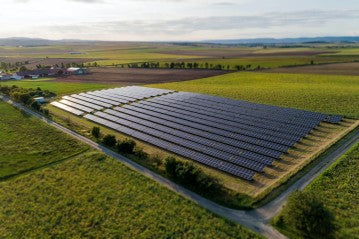
Solar energy has become an increasingly popular choice for consumers looking to reduce their carbon footprint and lower their energy bills. As the world embraces solar power, it's important to address potential concerns that customers may have. One such concern is the impact of solar flares on solar panels. In this blog post, we will explore the fascinating relationship between solar flares and solar panels, uncovering the truth behind their resilience and reliability.
Understanding Solar Flares
Solar flares are powerful eruptions of energy from the Sun's surface. These bursts of electromagnetic radiation can have various effects on Earth, including disrupting satellite communication and even causing power grid failures. It's natural to wonder if solar flares can also damage solar panels, which rely on sunlight to generate electricity.
Solar Panels: How They Work
To comprehend the potential impact of solar flares on solar panels, we must first understand how these remarkable devices function. Solar panels utilize photovoltaic technology to convert sunlight into usable electricity. Through a complex process, sunlight interacts with the panel's semiconductor materials, generating an electric current. This renewable energy source has gained popularity due to its eco-friendliness and long-term cost savings.
The Threat of Solar Flares
Given the intense electromagnetic radiation emitted during solar flares, concerns about the vulnerability of solar panels are valid. However, the reality is that solar panels are engineered with durability and resilience in mind. While solar flares can affect electronic devices and power grids, solar panels are designed to withstand such disturbances and continue operating efficiently.
Solar Panels and Solar Flares: Myth or Reality?
Scientific research and studies have consistently shown that solar panels are not as susceptible to damage from solar flares as one might think. The photovoltaic cells within solar panels are typically encased in a protective glass cover, which acts as a shield against electromagnetic radiation. Moreover, solar panel manufacturers implement rigorous testing to ensure their products meet high industry standards for resilience.
Real-life examples of solar panel performance during solar flare events further reinforce their reliability. Numerous solar installations around the world have continued to generate electricity seamlessly, even during periods of heightened solar activity. These examples illustrate the effectiveness of solar panels in withstanding the challenges posed by solar flares.
Ensuring Solar Panel Resilience
While solar panels are inherently designed to handle solar flares, it's still essential to take certain precautions to maximize their resilience. Proper installation by certified professionals is crucial, as it ensures the panels are securely mounted and positioned for optimum sunlight exposure. Routine maintenance, such as cleaning the panels and inspecting for any damage, can also contribute to their longevity.
In recent years, the collaboration between solar panel manufacturers and space agencies has led to advancements in protective technologies. Innovations such as advanced shielding materials and circuitry enhancements offer increased resistance to electromagnetic radiation. These ongoing efforts continue to push the boundaries of solar panel resilience.
What Steps Can I Take To Protect My Solar Power System From Solar Flares?
While solar panels are inherently designed to withstand solar flares, taking a few additional steps can provide extra protection and peace of mind. Here are some measures you can consider implementing to safeguard your solar power system:
1. Surge Protectors: Install surge protectors within your solar power system. These devices help regulate and mitigate voltage spikes that may occur during a solar flare event. By redirecting excess electrical energy away from sensitive components, surge protectors can prevent damage to your solar panels and other connected equipment.
2. Grounding: Ensure that your solar power system is properly grounded. Grounding provides a direct path for electrical currents to dissipate safely into the ground, protecting your system from over voltages caused by solar flares. Consult with a qualified electrician to ensure your grounding system meets local electrical codes and standards.
3. Monitoring and Maintenance: Regularly monitor the performance of your solar power system. Implement a monitoring system that can detect any anomalies or deviations from the expected energy output. By promptly identifying and addressing issues, you can mitigate potential damage and optimize the system's performance.
4. Professional Installation: Opt for professional installation services from certified solar panel installers. These experts have the knowledge and experience to properly secure your panels, optimize their placement, and implement the necessary protective measures. Their expertise ensures that your system is set up for optimal performance and resilience against external factors such as solar flares.
5. Insurance Coverage: Consider obtaining appropriate insurance coverage for your solar power system. Check with your insurance provider to ensure that your system is protected against potential damages caused by solar flares or other unforeseen events. Having adequate coverage can provide financial security and peace of mind in case of any unexpected incidents.
6. Stay Informed: Keep yourself updated with the latest developments in solar flare research and technology. Stay informed about advancements in solar panel design, protective measures, and industry standards. By staying current, you can make informed decisions and take advantage of new technologies or practices that further enhance the resilience of your solar power system.
Remember, while solar flares are a natural occurrence, the chances of significant damage to your solar power system are minimal. By following these precautionary steps and relying on the robust design of solar panels, you can confidently embrace solar energy and enjoy its benefits without undue worry.
Conclusion
Solar panels have proven to be resilient and reliable even in the face of solar flares. Their design, protective measures, and ongoing research efforts ensure their ability to withstand electromagnetic disturbances. By implementing additional precautions such as surge protectors, proper grounding, regular monitoring, professional installation, and insurance coverage, you can further safeguard your solar power system. Embrace solar energy with confidence, knowing that your system is well-equipped to handle the occasional solar flare. Join the solar revolution and contribute to a sustainable future powered by the sun.


0 Kommentare